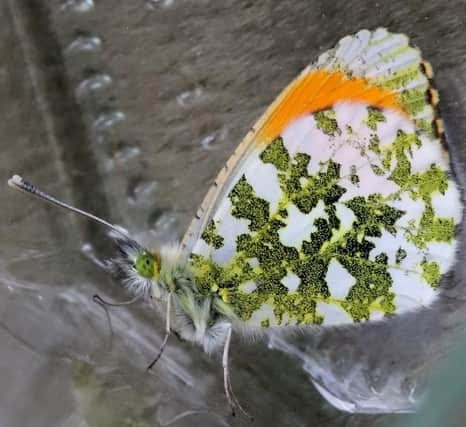Wildlife Column: Orange-tip butterfly emerges unexpectedly


This is an early spring butterfly to watch out for and will be seen along woodland edges, streamsides, and in gardens from late March until sometime in June.
The adults feed on nectar from flowers and this is a reason for the wildlife gardener to have plenty of early blooms to provide that food source. The caterpillars tend to browse on flowers such as honesty, lady’s smock, and hedge garlic (also called garlic mustard), and various other members of the crucifer family.
Advertisement
Hide AdAdvertisement
Hide AdThe males have stunning orange tips to the fore-wings, and both sexes have very striking patterns of mottled moss-green on the underside of the underwings.
The orange markings are probably important in the males defending their territories and attracting the females, but they are also an anti-predator trick. They warn would-be predators that the butterfly is distasteful.
During the summer, on the underside of flower buds, the mated female orange-tips lay their singly placed eggs, small and spindle-shaped. Whilst these eggs turn a rather deep orange colour in just a few days, they are hard to spot.
Once they hatch out, the caterpillars feed on the developing seed pod of the host flower. At this time the young larvae are coloured green and are well hidden against the foliage. However, there is a dark side to this pretty butterfly in that the orange-tip caterpillars are cannibalistic.
Advertisement
Hide AdAdvertisement
Hide AdIf they meet another larva on the food-plant then the smaller caterpillar is likely to be eaten. In fact this is not uncommon in quite a few butterfly species and a caterpillar makes for a high-protein meal!
Once mature, each caterpillar leaves the host plant to find a safe place to hide away, to form a pupa and to overwinter as a chrysalis.
This is usually in taller vegetation such as bushes or maybe on wooden fences and similar places. Adults generally emerge in April but sometimes earlier as with Paul’s in Meersbrook.